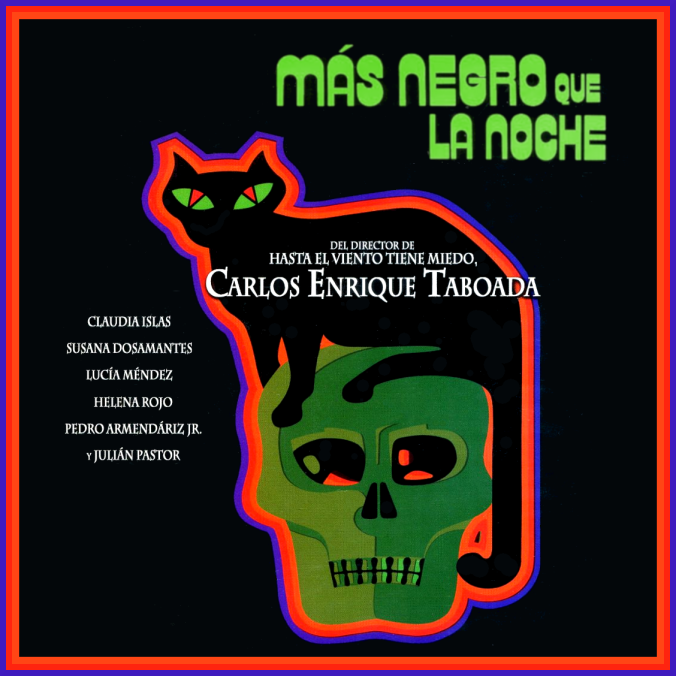
A Mexican horror film that relies on mood rather than viscera. It concerns four young women who share the same apartment. One of their number, Ofelia (Claudia Islas), learns that she has inherited her recently deceased Aunt Susana (Tamara Garina)’s old house – but there’s one catch, she must look after Bécquer, the dead lady’s beloved cat.
Ofelia very magnanimously invites her three friends to live with her in this new (old) home but at least two of the girls aren’t happy that they have to share it with a cat.
Boo! Personally, I’d make it a stipulation that one or more cats be part of any inheritance.
Anyway, they check the house out; it’s looked after by a stern, somewhat suspicious housekeeper called Sofia (Alicia Palacios), who seems to come as part of the package.
Quite a lot of the film is spent watching nothing very much happening. It’s quite sometime before anything really weird starts occurring. However, if a film is sufficiently well made (which this Carlos Enrique Taboada-directed movie is), I’m more than happy to stick with it.
Things start to go tits-up when Bécquer kills Aurora (Susana Dosamentes)’s pet canary. It’s not long before the pussycat is found dead in the cellar and things start to go truly awry.
Librarian Aurora is stalked in her place of work by what looks like an old lady with a cane (Aunt Susana?). Ofelia later discovers her friend hanging upside down; apparently, her heart stopped (is no one even a little bit suspicious about the hanging upside down bit?). Later, Pilar (Helena Rojo) is pursued around the basement of their house but she manages to get out unscathed. She later falls from the top of the stairs after taking fright at the spectre of Aunt Susana. Marta (Lucía Méndez) is the last to die, stabbed through the chest with two knitting needles (at the start of the film, we see the old woman doing some knitting).
As it turns out, the three dead girls had taken part in beating Bécquer to death, which is why Ofelia survives. That was the deal: Bécquer came with the house and they should have paid him more attention. RIP, Bécquer.
I really liked Más negro que la noche; cats and the macabre always seem to go well together. The film’s well-designed, very atmospheric and assuredly paced. The direction is good, particularly the library scenes, and the gals’ mid-seventies’ outfits and hairstyles are always a joy to behold (the guys, not so much so).
There’s a strong sense of macabre morality at the heart of the screenplay; it’s a story of respect (or lack thereof). If the young ladies had been just a little more gracious in their dealings with Bécquer, they would probably still be alive. It’s kind of neat, too, that Sofia – although set up as some kind of malign presence – is actually a decent person who did try to warn the women at various times. I also liked that the first death took place some distance away from the house, which means that simply moving out wouldn’t have stopped the rest of the cat-murderers from escaping the curse.
One of the oddest things about the movie, though, is the reaction to each death. The surviving girls always seem to be quite unfazed and carry on as if nothing had happened. When only Ofelia and Marta are left, they excitedly decide to have a party!
I honestly think that Ofelia was more upset at the death of Bécquer (which I kind of understand).